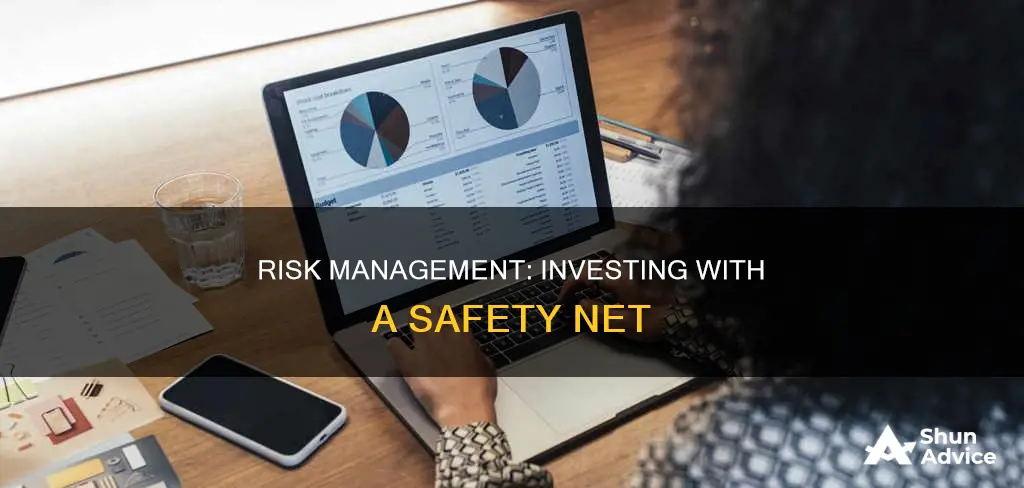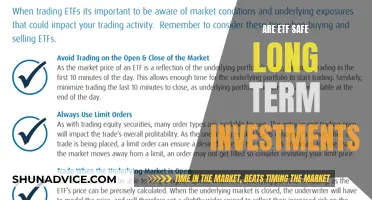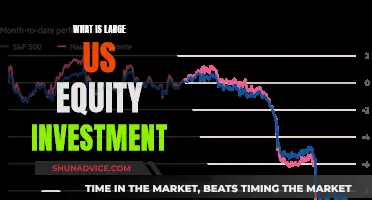
Risk is an inherent part of investment. All investments carry some degree of risk, which refers to the uncertainty and potential financial loss involved in an investment decision. In other words, when you invest in something, there is no guarantee that you will make a return, and you may even experience unexpected losses. On the other hand, a risky investment may pay off with unexpected returns. As risk increases, so too does the potential for greater rewards or losses. Risk can take many forms, including market risk, interest rate risk, inflation risk, and currency risk. It can be influenced by factors such as the stock market, the economy, and the length of investment time.
| Characteristics | Values |
|---|---|
| Definition | Risk refers to the degree of uncertainty and/or potential financial loss inherent in an investment decision |
| Returns | As investment risks rise, investors seek higher returns to compensate themselves for taking such risks |
| Risk Sources | The stock market, economy, length of investment time, and more are all potential risks |
| Types of Risk | Systematic risks (e.g. interest rate risk, inflation risk, currency risk) and unsystematic risks (risks specific to individual companies or industries) |
| Risk Mitigation | Portfolio diversification can help manage unsystematic risks, while other strategies like hedging and adjusting the investment time horizon can mitigate systematic risks |
What You'll Learn

The higher the risk, the higher the potential returns
Risk is an inherent part of investment, referring to the degree of uncertainty and potential financial loss in an investment decision. In other words, when you invest in something, there is no guarantee that you will make a return, and you may even experience unexpected losses. However, it is also true that the higher the risk, the higher the potential returns.
When it comes to investing, risk and return are closely linked. As investment risks rise, investors typically seek higher returns to compensate for the increased risk they are taking. This means that while there is a greater chance of loss, there is also the potential for greater gains. For example, stocks are considered riskier investments as they represent ownership in a company, and the value of stocks can fluctuate significantly based on market conditions. However, stocks also offer the potential for higher returns compared to more conservative investments.
The level of risk an investor is willing to take on depends on their risk tolerance, which is influenced by factors such as their investment goals, time horizon, and personal circumstances. Some investors may be more comfortable with taking on higher risks in pursuit of potentially higher returns, while others may prefer to prioritise capital preservation and opt for more conservative investment strategies.
It is important to note that while risk and return are correlated, it does not guarantee that taking on more risk will always result in higher returns. There are no guarantees in investing, and even the riskiest investments may not pay off as expected. Additionally, not all risks can be eliminated or controlled. Systematic risks, such as interest rate risk, inflation risk, and currency risk, affect the entire market or a large portion of it and cannot be diversified away.
To manage investment risk effectively, investors can employ strategies such as portfolio diversification, hedging, investing in assets that are less correlated with systematic risks, and adjusting their investment time horizon. By carefully considering their risk tolerance and implementing appropriate risk management strategies, investors can strive to balance the potential for higher returns with the potential for losses.
Was Investment Manager tun: Strategien für finanzielle Erfolge
You may want to see also

Systematic risks cannot be eliminated through diversification alone
Risk is an inherent part of investment, referring to the degree of uncertainty and potential financial loss that comes with any investment decision. In general, as investment risks rise, investors seek higher returns to compensate for the risks they are taking.
Systematic risks, such as interest rate risk, inflation risk, and currency risk, cannot be eliminated through diversification alone. This is because they affect the entire market or a large portion of it, rather than being specific to individual companies or industries. However, investors can still mitigate the impact of these risks by considering other strategies, such as hedging, investing in assets that are less correlated with the systematic risks, or adjusting the investment time horizon.
For example, an investor may choose to hedge their bets by investing in multiple different types of assets, rather than putting all of their money into one type of asset that could be affected by a particular systematic risk. They may also choose to invest in assets that are less correlated with the systematic risks they are trying to avoid. For instance, if an investor is concerned about the potential impact of inflation on their portfolio, they might consider investing in assets that have historically performed well during periods of high inflation, such as real estate or commodities.
Additionally, investors can adjust their investment time horizon to mitigate the impact of systematic risks. This might involve holding onto their investments for longer to ride out short-term market volatility or selling their investments early to lock in profits or minimise losses.
Understanding Risk: Average Risk Investment Explained
You may want to see also

Inflation risk
Risk is an inherent part of investing. In finance, risk refers to the degree of uncertainty and potential financial loss that comes with an investment decision. All investments carry some degree of risk, and as the risk rises, investors seek higher returns to compensate for the risk they are taking.
For example, if you invest in a CD with a fixed interest rate, the value of your investment may be eroded by inflation over time. This is because the purchasing power of your money decreases as prices increase. As a result, your investment may not be worth as much in real terms by the time it matures, even if you receive the expected return.
To mitigate inflation risk, investors can consider strategies such as hedging or investing in assets that are less correlated with systematic risks. Adjusting the investment time horizon may also help to reduce the impact of inflation on the overall return. Additionally, investors can choose investments that are expected to provide returns that outpace inflation, although these investments typically come with higher levels of risk.
Overall, inflation risk is an important consideration for investors as it can significantly impact the real value of their investments over time. By understanding and managing this risk, investors can make more informed decisions and protect their financial welfare.
How to Make Your Savings Work for You
You may want to see also

Market risk
Risk is an inherent part of investment. When you invest, you are taking a risk that you may not make a return, or that you may lose money. In general, the higher the risk, the higher the potential for reward.
The length of time that you invest for can also impact the level of market risk that you are exposed to. The longer you invest for, the more time your investments have to be affected by changing market conditions.
Portfolio Investment vs Brokerage: What's the Difference?
You may want to see also

Investor psychology and risk
Risk is an inherent part of investment. In finance, risk refers to the degree of uncertainty and potential financial loss that comes with an investment decision. Every investment product has different risks and returns. For example, stocks, bonds, mutual funds and exchange-traded funds can lose value, even their entire value, if market conditions are unfavourable. Even conservative, insured investments, such as certificates of deposit (CDs) issued by a bank or credit union, come with inflation risk.
Investor psychology plays a significant role in risk-taking and investment decisions. Individual investors' perception of risk, personal experiences, cognitive biases, and emotional reactions can influence their investment choices. For example, an investor's past experiences with risk and their emotional reaction to uncertainty can impact their tolerance for risk and their decision-making process. Investor psychology can also affect how investors perceive and respond to market conditions and other external factors that influence investment risk.
Additionally, investor psychology can impact the strategies that investors use to manage risk. For instance, while portfolio diversification can help mitigate unsystematic risks (risks specific to individual companies or industries), it may not be sufficient to protect against systematic risks (risks that affect the entire market or a large portion of it). Investor psychology can influence how investors navigate these systematic risks and whether they choose to employ strategies such as hedging or investing in assets that are less correlated with systematic risks.
Overall, investor psychology is a critical factor in understanding risk in investment. It shapes investors' perceptions of risk, influences their investment choices, and impacts the strategies they use to manage risk. By understanding investor psychology, investors can make more informed decisions about risk and potentially improve their investment outcomes.
Passive Equity Investments: Leveraging Opportunities for Long-Term Growth
You may want to see also
Frequently asked questions
Risk refers to the degree of uncertainty and/or potential financial loss inherent in an investment decision.
There are two main types of risk: systematic and unsystematic. Systematic risks affect the entire market or a large portion of it and include interest rate risk, inflation risk, and currency risk. Unsystematic risks are specific to individual companies or industries.
As risk rises, investors typically seek higher returns to compensate for the increased risk. Investors may also use strategies such as portfolio diversification to manage unsystematic risks.
Examples of risks in investing include market risk, where the value of an investment rises or falls due to market conditions, and inflation risk, where an investment may not earn enough over time to keep up with the increasing cost of living.







